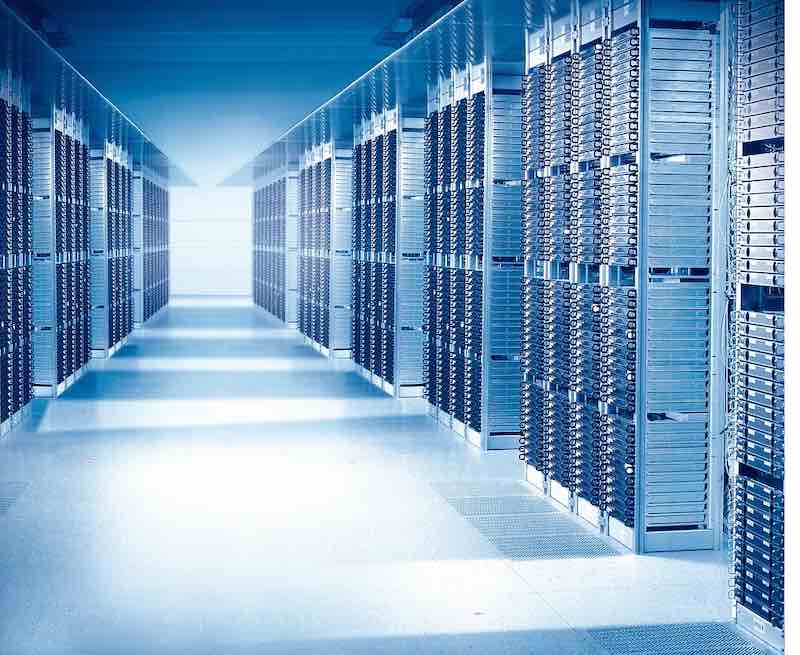

Source: Flickr


The massive and expanding data centres that enable our online lives are huge energy users. The top 100 data centres in Australia account for four per cent of our total energy use – more than any sector other than resources. The energy they consume is enough to power Coles and Woolworths combined.
Now, as the COVID pandemic moves bigger parts of our lives online and drives even greater energy consumption, the data centre industry is at a crossroads. Global market behemoth Amazon Web Services recently announced a plan to power its operations with renewable energy globally, causing ripples across the entire industry.
Amazon has the power, capital and clout to build its own solar farms to power endless racks of servers. But with the Australian data centre space highly contested, this kind of vertical integration clearly isn’t an option for most data centre operators.
Until recently, medium-sized data centres have been limited in their options for energy procurement. Direct procurement from energy generators is traditionally confined to energy users spending more than $2 million annually on power on a single site.
Large manufacturers and resources operations have been the greatest beneficiaries, while everyone else is forced to buy energy from a retailer and purchase offsets if they wish to run a sustainable operation.
This is particularly difficult for data centre operators as so much of their operating expenditure is taken up by power. Siemens estimates that energy accounts for one in every four dollars spent in the data centre sector.
Given these energy costs are usually charged to customers as a component of the centre’s service, operators have been grappling with the question of how to embrace sustainability without either eating into their own slim margins or making themselves less competitive in the market.
There is now a new technology that can solve this problem, both in the data centre sector and other energy-intensive businesses across the economy.
By using a distributed ledger system known as blockchain, and standardised contract architecture developed specifically for the Australian market, data centres and other mid-sized businesses can buy verified renewable energy directly, at competitive prices, with flexibility and transparency.
Traditionally solar farms and other energy-generating ventures sell their generation capacity in the form of a Power Purchase Agreement – a PPA for short – which is contracted to a single large buyer. This is usually either a retailer or an energy-intensive business paying more than $2 million for energy annually.
Even apart from the cost threshold, there are barriers that make this process less attractive for mid-size customers including those in the data centre business.
The protracted nature of the negotiations, the decade-long contract terms with 12 to 18 months of delivery timelines depending on project stage, the bespoke legal processes involved, the illiquid nature of the PPA as an asset and the need to engage specialist consultants to execute the transaction all prevent them from being widely engaged.
But the use of blockchain to allow for standardised partial-purchasing of PPAs has removed many of these barriers.
WePower’s recent report into the potential for renewable energy procurement in the data centre industry found that data centres could save up to 30 per cent of their energy costs through direct procurement of renewable energy under various fractional PPA arrangements underpinned by Standard Form of Agreement (SOFAs) that removed the need for bespoke legal and contractual processes for each agreement.
The fractional effect is to make PPAs into fungible commodities that can be bought and sold on a secondary marketplace. This not only lowers the cost of entry to direct energy procurement from $2 million to $100,000 annually, but it also introduces liquidity into Power Purchase Agreements, enabling customers to dip a toe in the water of direct procurement initially before taking the plunge.
Those who find their needs change over time can sell down excess capacity to other users, and through the blockchain ledger, every deal contains a verified link to the original PPA – the electric “DNA” – that verifies the source of the energy purchase.
In an environment where customers will be expecting data centres to provide not just seamless service but also sustainability credentials, mid-market players must take advantage of these advances in technology to balance the power of the Amazons and Googles of the world.
Harley Tempest is head of sales at WePower Network
This post was published on June 25, 2020 6:14 pm
Wayne Smith from the Smart Energy Council on what to expect from the federal home…
Both major political parties are being urged to cut the price of household solar batteries…
Solar expansion project at major Australian airport takes it past its target to self-generate 15%…
Chinese solar manufacturing giant says it has developed the world’s first industrial-standard PV module delivering…
Australian hardware and garden store giant says it has reached 100 per cent renewables, with…
Data used to showcase the downward impact of renewable energy on power prices contained a…